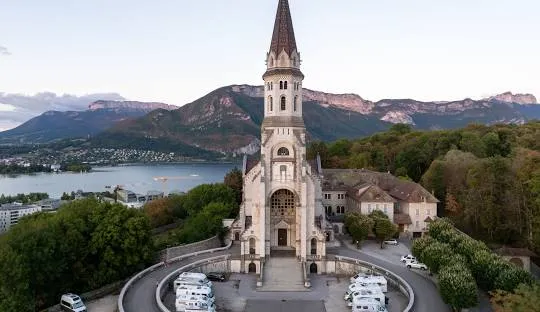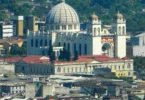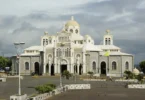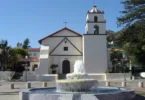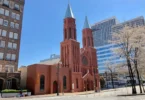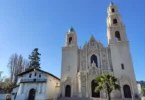Introduction
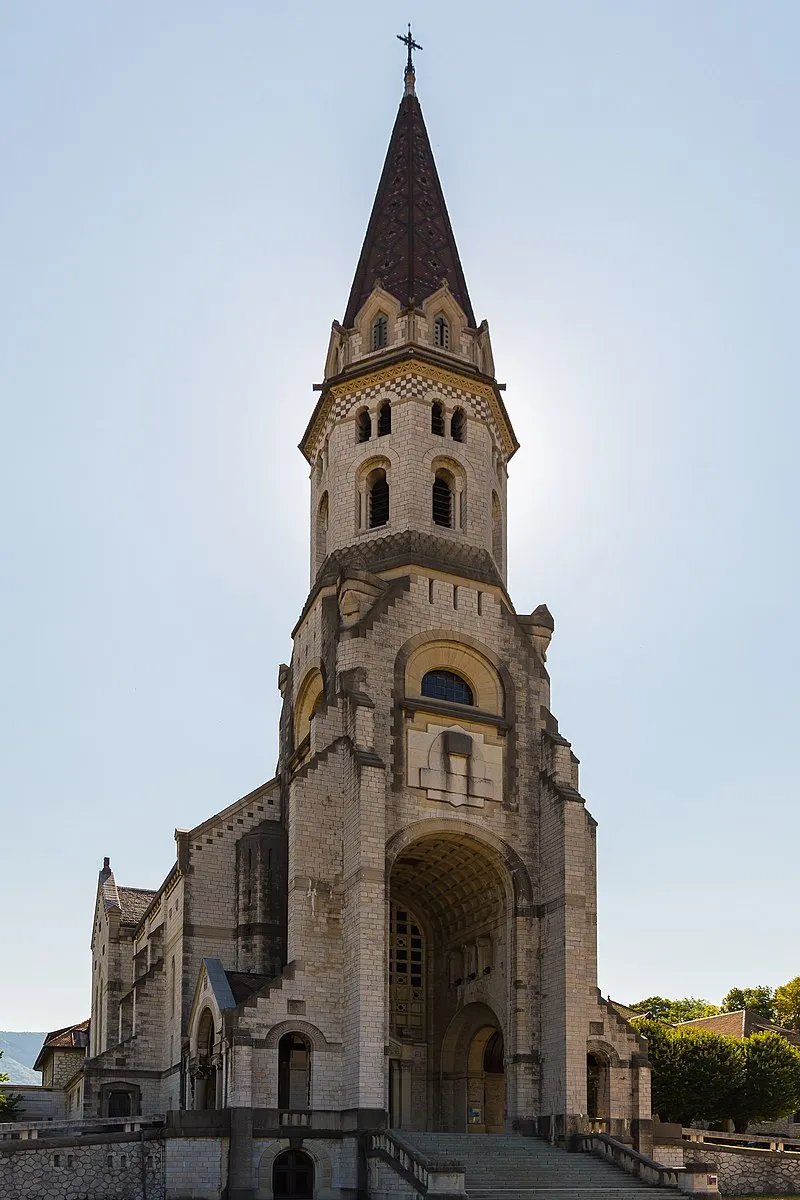
The Basilica of the Visitation is above all a place of prayer. The silence that reigns there helps to meet with oneself and to listen to God, “God of the human heart”, according to the expression of St Francis de Sales, the living God who comes to meet us by sharing our life, becoming man in Jesus and giving us his Spirit In the monastery next to the Basilica, nuns from several countries offer their lives to. God and carry in their hearts and prayers the intentions of all men and women their brothers.The Basilica of the Visitation of Annecy , erected on the Crêt du Maure , which is the first buttress of the Semnoz massif , appears to dominate Annecy and can be seen from anywhere, for miles around. It is the symbol of the city’s prestigious religious past.
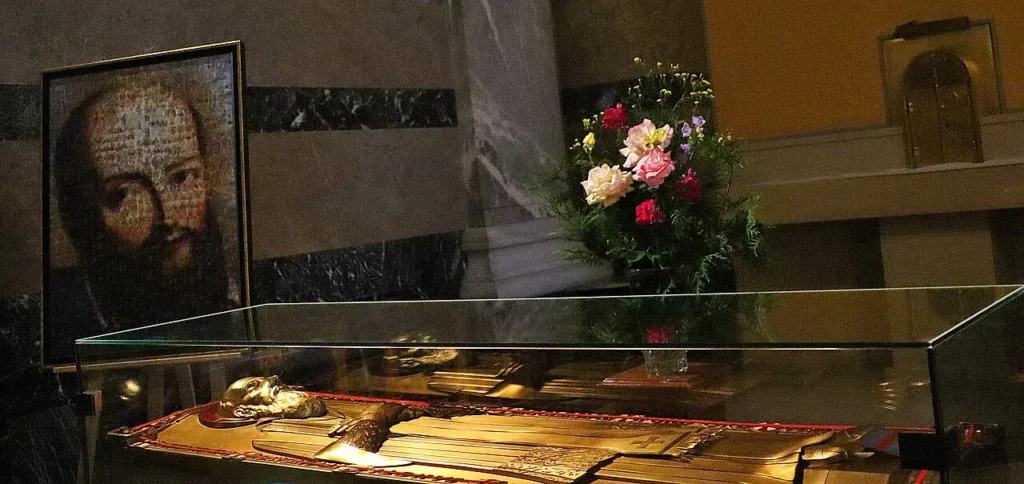
The Basilica of the Visitation, as we know it today, has a rich and complex history spanning more than four centuries. Its origins date back to the early 17th century, when two eminent Catholic figures, Saint François de Sales and Saint Jeanne de Chantal, founded a monastery in the town of Annecy. The monastery was dedicated to the Visitation of the Virgin Mary, hence the basilica’s name.
One of the key moments in the basilica’s history was its foundation in 1610. This event marked the beginning of a period of intensive construction. The first church, in Gothic style, was erected, but over the years it underwent several renovations and extensions to meet the growing needs of the religious community and pilgrims.
A particularly significant moment in the basilica’s history came in the 18th century, when the building was extensively remodeled in the Baroque style. This architectural transformation added a new artistic dimension to the building, with sumptuous frescoes, elaborate stuccowork and richly decorated altars. These elements, still visible today, testify to the basilica’s importance as a center of faith and culture at the time.
The French Revolution brought major upheavals to the basilica. In 1792, it was closed and the associated monastery dissolved. The monastery’s assets were confiscated, but fortunately, valuable works of art were saved by Annecy residents who understood the basilica’s cultural value. However, the building itself was used for a variety of secular purposes during this tumultuous period. After the Revolution, in the 19th century, the basilica was gradually restored and renovated to its sacred appearance. This period of restoration preserved the Baroque architectural elements while reinforcing the religious identity of the site. It has become an important place of pilgrimage, attracting devotees and visitors from all over the world.
Today, the Basilique de la Visitation is a living testimony to the history of Annecy and the Catholic faith. Visitors can admire the evolution of its architecture through the centuries, from early Gothic days to Baroque opulence, to the challenges of the French Revolution. Every stone in the building tells a part of this story, making the Basilica a unique place of memory and spirituality.
As you explore the Basilique de la Visitation, you can literally walk through the pages of history, feel the perseverance of the religious communities who have kept it alive, and appreciate the artistic beauty that surrounds it, making your visit an unforgettable experience at the crossroads of faith and culture.
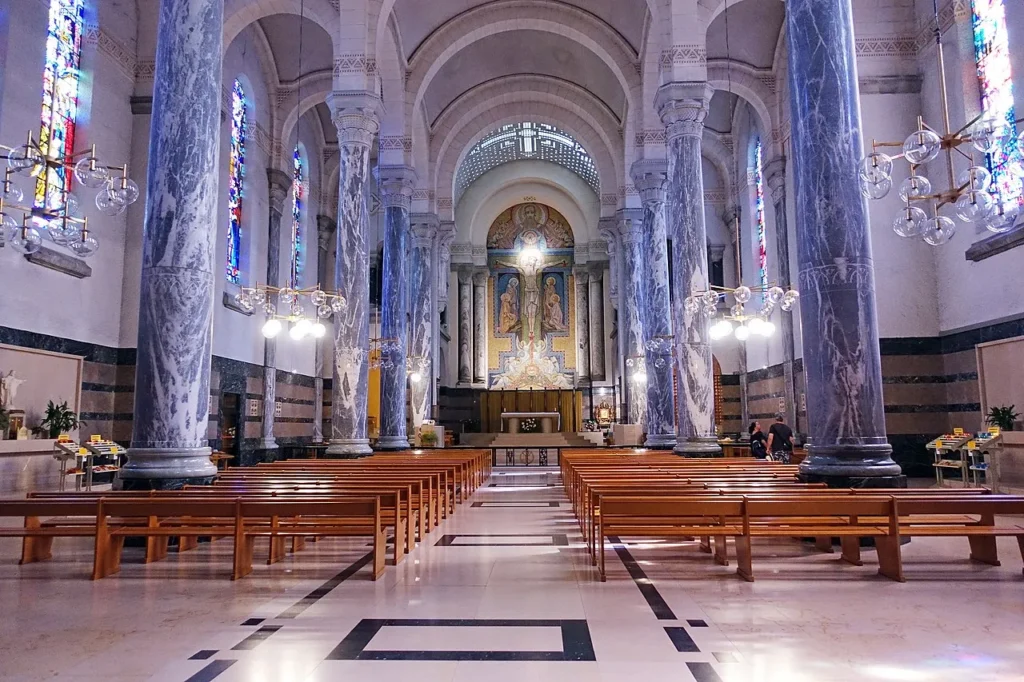
The basilica was built in the typical style of the late 19th century . The bell tower is 72 metres high and is topped with a 7-metre bronze cross. The nave rests on a crypt with low arches, designed by Henri Adé. The vault was built in a semicircular shape. The stained glass windows of the basilica evoke the lives of the two founding saints. It has a carillon of 37 bells and a bourdon named Marie Françoise which sounds a low A weighing nearly four tonnes on its own.
Two Christs on the cross surmounting two altars are the work of the sculptor Philippe Besnard (1949).
In 1986, on the occasion of the visit of Pope John Paul II , two bells were cast by the Paccard foundry; the second, weighing 160 kilos, called Karol, was integrated into the carillon of the basilica.
The Nave
The Basilica of the Visitation dominates the sky from its high rocky seat on the cret du Maure, a peak of the Semnoz massif of south-eastern France. It is an aspiring declaration in stone, visible for miles around the city of Annecy.
Not a medieval edifice, the basilica was started in 1909 and completed in 1930. It was based on the plans of architect Alfred-Henri Recoura. It is connected to the mother house monastery of the Order of the Visitation. The Visitandines order was founded in 1610 by Saint Francis de Sales and Saint Jeanne de Chantal.
The remains of the two saints are in the side naves of the basilica in gilded bronze sarcophagi. The basilica style is typical late 19th century. The bell tower spire reaches a height of 275 feet, topped by a 28 foot cross. The nave is built over a crypt designed by architect Henri Ade.
The vault of the nave is in a semicircular arch. Stained glass windows depict events in the lives of the two celebrated saints. This bell tower actually has bells. It holds a carillon of 38 bells. That’s eight tons of bells. One bell, by the name of Marie Francoise, weighs four tons.
The Choir
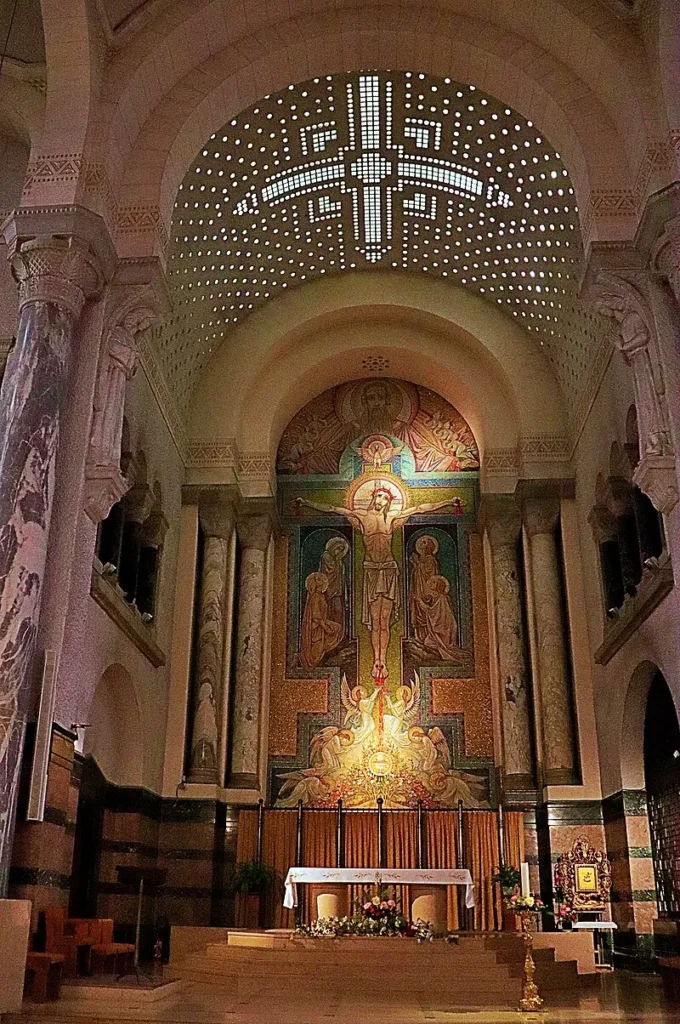
The choir of the Basilica of the Visitation of Annecy is a significant and visually striking feature of the church’s interior. Located at the eastern end of the basilica, the choir is where the clergy and choir members gather for liturgical services. It is designed in a neo-Gothic style, with intricate wooden pews, decorative carvings, and an altar that emphasizes the sacredness of the space. The space is often filled with stained-glass windows that cast colorful light, adding to the spiritual and tranquil atmosphere.
The choir also holds great historical importance due to the basilica’s association with Saint Francis de Sales and Saint Jane Frances de Chantal, who founded the Order of the Visitation of Holy Mary here. The design of the choir, like the rest of the basilica, reflects the spiritual heritage of these saints and the church’s role in the Catholic Counter-Reformation.
The serene and sacred environment of the choir makes it a place of reflection and prayer for those attending services at the basilica.
The Salesian Museum and Memorial
Housed in an annex of the monastery, the Salesian Museum perpetuates the history of the Order of the Visitation , of Joan of Chantal , and of the life and work of Francis de Sales . A memorial to Saint Francis de Sales has been set up in the premises of the former monastery of the Visitation, on the side of the current church of Saint Francis in the old town of Annecy.
Feast Day
Feast day: 31st May
The Annual Feast day of Basilica of the Visitation of Annecy, France , is celebrated on May 31 each year.
Church Mass Timing
Tuesday : 7:30am., 5:30pm.
Wednesday : 7:30am., 5:30pm.
Thursday : 7:30am., 4:30 p.m., 5:30pm.
Friday : 7:30am., 08:00am., 5:30pm. 08:00pm.
Saturday : 7:30am., 5:30pm.
Sunday :10.00am., 4:00pm., 5:00pm.
Church Opening Time:
Monday : 7:15 am – 6:30 pm
Tuesday : 7:15 am – 6:30 pm
Wednesday : 7:15 am – 6:30 pm
Thursday : 7:15 am – 6:30 pm
Friday : 7:15 am – 6:30 pm
Saturday : 7:15 am – 6:30 pm
Sunday : 9:00 am – 5:30 pm
Contact Info
Address:
11 Av. de la Visitation, 74000 Annecy, France.
Phone : +33450452030
Accommodations
Connectivities
Airway
Basilica of the Visitation of Annecy, France to Aéroport Annecy Mont-Blanc, 8 Rte de Côte Merle, 74370 Epagny Metz-Tessy, France is 20 min (7.2 km) via Rue de l’Égalité.
Railway
Basilica of the Visitation of Annecy, France to Geneva, Pl. de Cornavin 7, 1201 Genève, Switzerland is 50 min (46.3 km) via A41.

